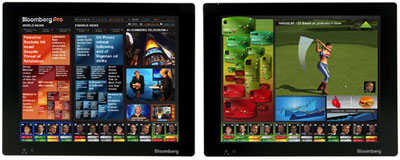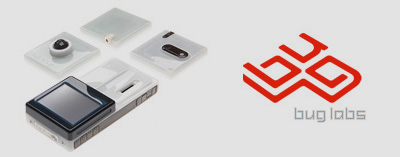“BUG is a collection of easy-to-use, open source hardware modules, each capable of producing one or more Web services. These modules snap together physically and the services connect together logically to enable users to easily build, program and share innovative devices and applications. With BUG, we don’t define the final products – you do.”
Category Archives: Interactive Design
Thermo
![]()
“Thermo” is an upcoming Adobe product that makes it easy for designers to create rich Internet application UIs. Thermo allows designers to build on familiar workflows to visually create working applications that easily flow into production and development.
Features
- Use drawing tools to create original graphics, wireframe an application design, or manipulate artwork imported from Adobe Creative Suite tools.
- Turn artwork from Adobe Photoshop, Illustrator, or Fireworks directly into functional components that use the original artwork as a “skinâ€.
- Define and wire up interactive behavior, such as what to do when a user clicks on something, without having to write code.
- Easily design UIs that work with dynamic data, such as a list of contacts or product information, without having access to the actual data source. Design-time sample data can be used as a realistic placeholder when laying out an application, testing interactivity, and choreographing motion.
The Bloomberg Makeover

Portfolio.com asked 3 top design firms to redesign the interface for Bloombergs’ main terminals. thehappycorp, IDEO and Ziba Design all contributed their versions with varying degrees of success. The entries clearly show each firms design influence in their concepts. IDEO focused more on the hardware, but with thoughtful attention to the software interface. Thehappycorp entry, while I am not familiar with the company itself, shows influences based on the happycorp website. Ziba Designs concept, in my opinion, shows little effort and is the least effective from a realistic, viable option. The other 2 could possibly be implemented effectively. See the concepts and decide for yourself.
Visual Complexity

“VisualComplexity.com intends to be a unified resource space for anyone interested in the visualization of complex networks. The project’s main goal is to leverage a critical understanding of different visualization methods, across a series of disciplines, as diverse as Biology, Social Networks or the World Wide Web. I truly hope this space can inspire, motivate and enlighten any person doing research on this field.”
Get the Glass!

An online game…extension of the Got Milk campaign… that has got to be one of the best game experiences that I have seen in a very long time on the web. With hints of Myst-like qualities, Get the Glass is definitely worth a visit.
